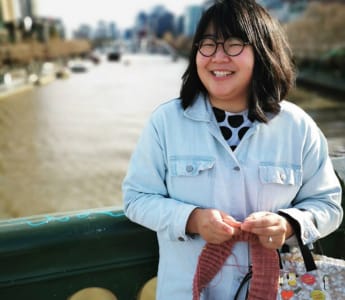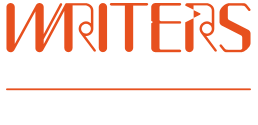
Sophia Cai is a curator and arts writer based in Narrm/Melbourne, Australia. She currently teaches at the Victorian College of Arts, University of Melbourne and Monash Art Design & Architecture, Monash University, while also maintaining an independent curating and writing practice.
Ahead of her workshop Writing About Art, Sophia spoke with Marketing and Communications Officer Sarah Giles about curating, writing about art and BTS.
When writing about art, an artist, or a particular show, where do you begin?
It always begins with the art itself: what it is, what it is about, and who made it (if known). I then think about the space and context in which it is being seen, how I have encountered it, and how meaning is shaped by this. Sometimes my relationship with art, artists and exhibitions changes over time, particularly if I gain additional research or information that colours my interpretation.
Writing about art is often about trusting your intuition, and then being courageous enough to express these ideas. Art can be such a slippery thing, its interpretation can be highly subjective and interpersonal, which means trying to capture it in words is not always easy.
As a reader, what do you like to see in or learn from a piece of writing about art?
I like art writing that speaks to and recognises the viewer’s relationship to the art object, as something situated in time, space and culture; a self-awareness of this connection. I also like art writing that uses art as a jumping point for broader questions and critique. Art doesn’t exist in a vacuum, and art writing shouldn’t either.
Not only do you write about art, but you are a curator of many exhibitions. How do you begin constructing a new show?
For me, art writing and curating are like two sides of the same coin – which is about using different methods (language and exhibition making) to communicate about art and its relationship to the world. Curating is however, different to writing, because it involves collaboration and working with others (e.g. artists), while writing can exist as a solitary activity. I don’t think it would be easy or possible to curate as a solitary activity.
My exhibitions are often driven by whatever is shaping my life and interests at that time, as well as artists whose practices I am inspired by and want to learn more about. I try not to be too prescriptive when it comes to curating, by instead asking artists to be decision-makers about how they might like to participate and what works of theirs might be the best fit for the curatorial framework I propose. This is a balancing act between control and letting go: by putting trust in artists to be the best placed to express their work and ideas, and recognising my role is as a facilitator in this interaction.
You’re a self-described #casualfan of the K-pop band BTS and recently wrote an article for the Guardian called ‘Why I love being a BTS fangirl in my 30s’. You’ve written about the band and curated exhibitions inspired by their music. I would love to learn more about what fandom (BTS or otherwise) means to you, your writing, your work and your creativity.
In a nutshell, BTS is my current creative muse. When I make work inspired by them, it comes naturally, because they are always on my mind one way or another. It has been rewarding to navigate a dual position as a fangirl and as a curator and writer, because one is so deeply invested in feelings while the other requires me to over-think and analyse. I think there is probably a happy middle ground between these two spaces, that I’m still learning how to navigate.
Tell me about an exhibition you have visited or worked on that has stuck with you the most, and why?
Most recently I was really struck by Between Waves at ACCA. It was an ambitious and rigorous exhibition, and what I liked about it was how well considered and curated the artworks were to each other in the space – where different artists complemented each other, rather than vied for attention and space against each other.
Without spoiling your upcoming workshop, Writing About Art, what advice would you give to writers who want to write about art?
Art writers occupy a funny space – between ‘real’ writers and artists. But in this space there is also a lot of room for play and experimentation – so enjoy it!
Places are still available in Sophia’s workshop Writing About Art. Members of Writers Victoria receive up to 37% off the full price of all clinics, workshops, seminars and courses. Writers experiencing financial and social barriers to developing their skills are encouraged to apply to The Writers Victoria Fund for subsidised attendance at workshops and clinics.
